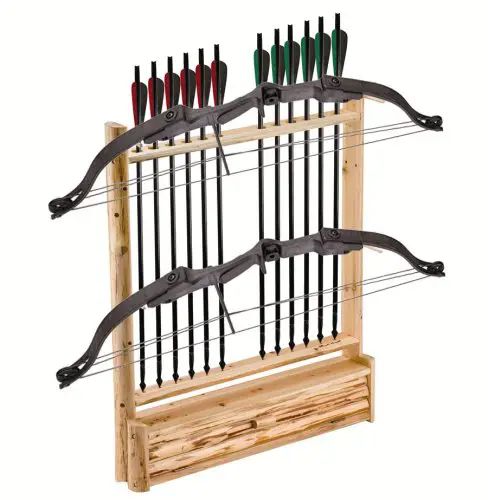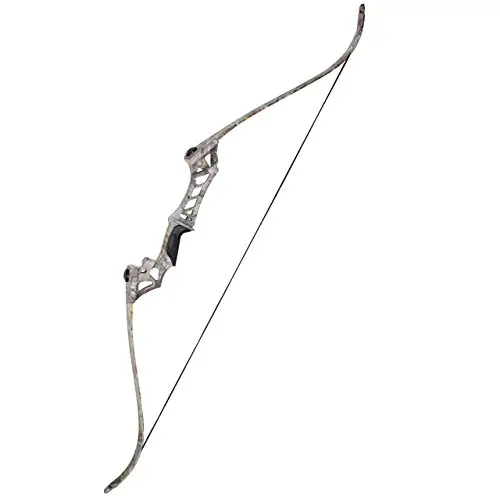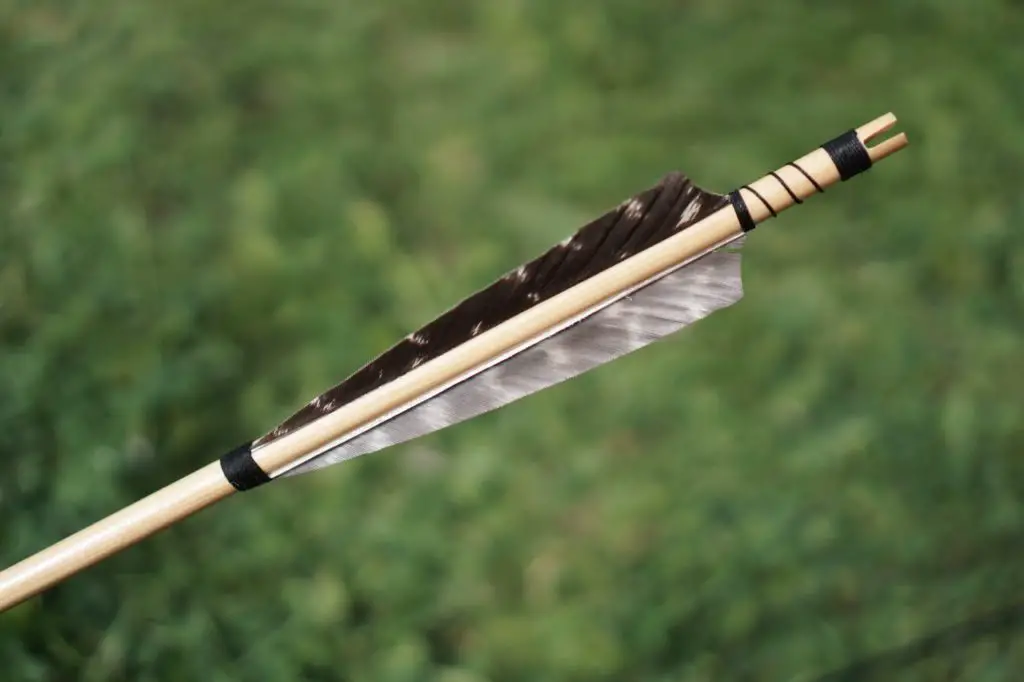Are you interested in learning about the differences between straight bows and recurve bows? If so, you’ve come to the right place! Bows have been used for centuries for hunting and sport, and have evolved over time to meet the needs of archers. Two popular types of bows are the straight bow and the recurve bow.
Straight bows, also known as longbows, have a traditional design that dates back to medieval times. They have a simple, classic look with a straight grip and limbs that are uniform in width from top to bottom. In contrast, recurve bows have limbs that curve away from the archer at the tips. This curve allows for a longer draw length and more power, making them a popular choice for competitive archers.
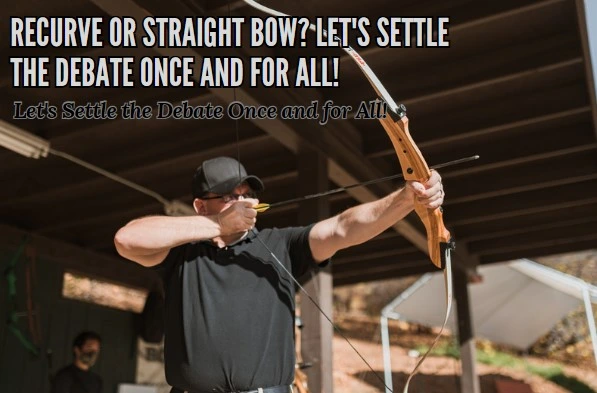
Key Takeaways
- Straight bows have a traditional design that dates back to medieval times, while recurve bows have limbs that curve away from the archer at the tips.
- Recurve bows allow for a longer draw length and more power, making them a popular choice for competitive archers.
- The choice between a straight bow and a recurve bow ultimately depends on the archer’s preference and intended use.
The Basics of Bows
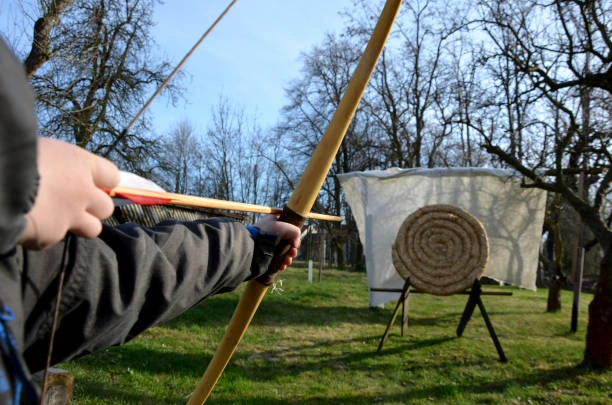
Are you interested in learning about the different types of bows? Whether you’re an experienced archer or just starting out, it’s important to understand the basics of bows before choosing which one is right for you.
Bows come in many shapes and sizes, but they all have the same basic components: a grip, limbs, and a string. The limbs are the most important part of the bow, as they store and release energy when the string is drawn back.
There are two main types of bows: straight bows and recurve bows. Straight bows are also known as longbows or traditional bows, and they have a simple, straight design. Recurve bows, on the other hand, have a more complex shape that curves away from the archer at the tips of the limbs.
The shape of a bow affects its performance and the type of archery it’s best suited for. Straight bows are great for traditional archery and hunting, while recurve bows are more commonly used in Olympic and target archery.
When it comes to choosing a bow, there are a few factors to consider. The length of the bow should match your draw length, and the weight of the bow should be comfortable for you to hold and shoot. Recurve bows can be easier to handle for beginners, as they have a lower draw weight and are more forgiving of mistakes.
In summary, understanding the basics of bows is essential for anyone interested in archery. Whether you prefer a straight bow or a recurve bow, choosing the right bow for your needs and skill level is key to success in the sport.
Materials of Bows
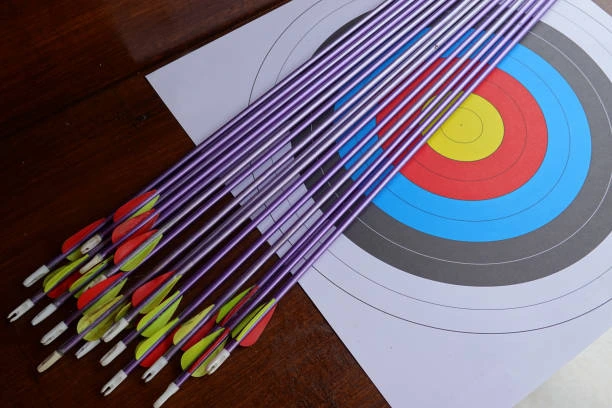
When it comes to the materials used to make bows, there are a variety of options available. Some of the most common materials include wood, fiberglass, synthetic materials, carbon, composite materials, laminated bows, and self-bows. Each material has its own unique properties and advantages, so it’s important to choose the right one for your needs.
Wooden bows are a popular choice for traditional archers. They are often made from woods such as yew, hickory, and osage orange. Wooden bows are known for their beauty and natural feel, but they can be prone to warping and breaking if not properly cared for.
Fiberglass bows are a more modern option that offer durability and consistency. They are made by layering fiberglass over a core material, such as wood or foam. Fiberglass bows are relatively inexpensive and easy to maintain, making them a good choice for beginners.
Synthetic materials, such as nylon and plastic, are also used to make bows. These materials are lightweight and durable, but they lack the natural feel of wood or composite materials.
Carbon bows are another modern option that offer strength and consistency. They are made by layering carbon fibers over a foam core. Carbon bows are known for their speed and accuracy, making them a popular choice for competitive archers.
Composite materials, such as those used in recurve bows, are made by layering different materials together to create a strong and flexible bow. These materials can include wood, fiberglass, carbon, and synthetic materials. Composite bows are known for their versatility and can be used for a variety of archery styles.
Laminated bows are made by layering thin sheets of wood or other materials together to create a strong and durable bow. They are often used in traditional archery and can be made to look like a solid piece of wood.
Self-bows are made from a single piece of wood and are often used in traditional archery. They require a lot of skill to make and can be prone to breaking, but they offer a natural feel and beauty that can’t be replicated with other materials.
Overall, the material you choose for your bow will depend on your personal preferences and needs. Whether you’re a traditional archer or a competitive shooter, there is a bow material out there that will work for you.
Understanding the Form and Function
Are you curious about the differences between straight bows and recurve bows? Let’s dive into the form and function of each type of bow.
First, let’s discuss the limbs. Straight bows have straight limbs, while recurve bows have limbs that curve away from the archer at the tips. This curvature allows the recurve bow to store more energy, resulting in a faster arrow speed and longer range.
Next, let’s talk about draw weight. Both straight bows and recurve bows have a draw weight, which is the amount of force required to pull the bowstring back to the anchor point. Recurve bows typically have a higher draw weight than straight bows, due to their increased energy storage.
When it comes to energy, recurve bows have the advantage. The curved limbs of a recurve bow allow for more energy to be stored and released during the shot, resulting in a faster arrow speed and more power.
Speaking of speed, recurve bows tend to be faster than straight bows due to their increased energy storage and release. This increased speed can also result in a longer range for the arrow.
One factor to consider when choosing between a straight bow and a recurve bow is your own strength and tension. Recurve bows require more strength and tension to draw back, due to their higher draw weight and increased energy storage.
Sights can be used on both straight bows and recurve bows to aid in aiming, but recurve bows typically only have a single sight, while straight bows can have multiple sights.
Finally, let’s discuss the draw cycle. Recurve bows have a smoother draw cycle than straight bows, due to their increased mechanical advantage and reduced stacking. This smoother draw cycle can result in less torquing and a more consistent shot.
Overall, both straight bows and recurve bows have their advantages and disadvantages. It’s important to consider your own strength, draw length, and shooting style when choosing between the two.
Types of Bows
Are you interested in archery? If so, you might be wondering about the different types of bows available. There are several types of bows, each with their own unique characteristics. In this section, we’ll cover the most popular types of bows: straight bows and recurve bows.
Straight Bows
Straight bows, also known as longbows or self-bows, are the most basic type of bow. They have a simple design and consist of a single piece of wood that is bent into a curve. Straight bows are easy to make and use, making them a great choice for beginners.
Recurve Bows
Recurve bows are a more modern type of bow that has become increasingly popular in recent years. They have a unique design that allows for more power and accuracy than straight bows. The limbs of a recurve bow curve away from the archer, which gives the bow more power when it is drawn. Recurve bows are also more compact and easier to transport than straight bows.
Compound Bows
Compound bows are a type of modern bow that uses a system of pulleys and cables to increase the bow’s power and accuracy. They are popular among hunters and competitive archers because of their precision and power. Compound bows are also easier to hold at full draw than other types of bows, which makes them a great choice for beginners.
Crossbows
Crossbows are a type of bow that uses a horizontal limb assembly mounted on a stock to shoot bolts or arrows. They are popular among hunters because they are easier to aim and require less physical strength to use than other types of bows. Crossbows are also more accurate than other types of bows, making them a great choice for long-range shooting.
Reflex Bows
Reflex bows are a type of recurve bow that has a unique design that allows for more power and speed than other types of bows. They have limbs that curve forward towards the archer, which gives the bow more power when it is drawn. Reflex bows are also more compact and easier to transport than other types of bows.
In conclusion, there are several types of bows available, each with their own unique characteristics. Whether you are a beginner or an experienced archer, there is a type of bow that will suit your needs.
Archery Styles
Are you interested in archery but not sure where to start? There are many different styles of archery, each with its own unique set of rules and challenges. In this section, we’ll cover some of the most popular styles of archery, including shoot, target archery, field archery, 3D archery, and instinctive shooting.
Shoot is a style of archery where archers shoot at targets from different distances. The targets can be placed at varying distances, and archers must be able to adjust their aim accordingly. This style of archery is great for beginners because it allows them to practice their aim and accuracy.
Target archery is a style of archery where archers shoot at a stationary target from a fixed distance. The target is usually a bullseye with concentric circles, and archers score points based on where their arrows land. This style of archery is very popular and is often seen in the Olympics.
Field archery is a style of archery where archers shoot at targets that are placed in a natural setting, such as a forest or field. The targets can be placed at varying distances and angles, and archers must navigate through the terrain to get to each target. This style of archery is great for those who love the outdoors and want to challenge themselves.
3D archery is a style of archery where archers shoot at three-dimensional targets that are shaped like animals. The targets can be placed at varying distances and angles, and archers must adjust their aim to hit the target. This style of archery is great for those who want to simulate hunting scenarios and improve their accuracy.
Instinctive shooting is a style of archery where archers shoot without using any sights or aiming aids. Instead, they rely on their instincts and muscle memory to hit the target. This style of archery is great for those who want to challenge themselves and improve their overall archery skills.
No matter which style of archery you choose, it’s important to practice regularly and stay safe. Always follow proper safety guidelines and wear appropriate protective gear. With dedication and practice, you can become a skilled archer and enjoy this exciting sport for years to come.
Straight Bow vs Recurve Bow: A Comparison
Are you in the market for a new bow but are unsure whether to go with a straight bow or a recurve bow? Let’s take a closer look at the differences between the two to help you make an informed decision.
Difference and Comparison
The main difference between a straight bow and a recurve bow is the shape of the limbs. A straight bow has limbs that are straight from handle to tip, while a recurve bow has limbs that curve away from the archer at the tips. This difference in shape affects the way the bow performs and how it is used.
Accuracy and Performance
When it comes to accuracy and performance, both types of bows have their advantages and disadvantages. Straight bows tend to be more consistent and quieter than recurve bows. However, recurve bows are generally more efficient and can shoot faster arrows with less effort.
Advantages and Disadvantages
Straight bows are generally more durable and require less maintenance than recurve bows. They are also typically less expensive and easier for beginners to use. However, they may not be as powerful or efficient as recurve bows.
Recurve bows, on the other hand, are more versatile and can be used for a wider range of activities, including hunting and target shooting. They are also more customizable and can be adjusted to fit the archer’s preferences. However, they can be more expensive and require more maintenance.
Size and Durability
When it comes to size, straight bows are generally shorter and more compact than recurve bows. This makes them easier to transport and store. However, they may not be as powerful as longer bows.
In terms of durability, both types of bows can last for many years with proper care. However, recurve bows may be more susceptible to damage due to their curved limbs.
Consistency and Noise
Straight bows are generally more consistent in terms of accuracy and performance than recurve bows. They also tend to be quieter and produce less noise when fired. Recurve bows, on the other hand, may be louder and produce more vibration when fired.
In conclusion, both straight bows and recurve bows have their advantages and disadvantages. The choice ultimately comes down to personal preference and intended use. Whether you’re a beginner or an experienced archer, there is a bow out there that will suit your needs and help you achieve your goals.
Bow Accessories

You’ve just bought your first bow and you’re ready to start shooting, but before you do, you need to consider what accessories you’ll need to enhance your shooting experience. Whether you’re shooting a straight bow or a recurve, there are a few essential accessories you’ll need to get started.
Arrows
Arrows are an essential component of any archery setup. When choosing arrows, you’ll need to consider the material, length, weight, and spine. The material of the arrow can affect its durability and performance. The length and weight of the arrow will depend on your draw length and the weight of your bow. The spine of the arrow refers to its stiffness, and you’ll need to choose an arrow with a spine that matches your bow’s draw weight.
Rests
A rest is a device that holds the arrow in place on the bow. There are several types of rests available, including the shoot-through rest, the drop-away rest, and the containment rest. Each type has its advantages and disadvantages, and the type of rest you choose will depend on your shooting style and preferences.
Releases
A release is a device that helps you release the bowstring with more accuracy and consistency. There are several types of releases available, including the finger release, the thumb release, and the wrist release. Each type has its advantages and disadvantages, and the type of release you choose will depend on your shooting style and preferences.
Cams
Cams are a component of compound bows that help increase the bow’s draw weight and store energy. There are several types of cams available, including single cams, hybrid cams, and binary cams. Each type has its advantages and disadvantages, and the type of cam you choose will depend on your shooting style and preferences.
Accessories
There are several other accessories that can enhance your shooting experience, including sights, stabilizers, quivers, and finger tabs. A sight can help you aim more accurately, while a stabilizer can help reduce bow vibration and improve balance. A quiver can hold your arrows, and a finger tab can protect your fingers from the bowstring.
In conclusion, choosing the right accessories is essential for any archer looking to improve their shooting experience. Whether you’re shooting a straight bow or a recurve, there are several essential accessories you’ll need to get started. Consider your shooting style and preferences when choosing accessories, and don’t be afraid to experiment to find what works best for you.
Bows in Hunting and Sports

If you’re interested in hunting or sports, then you know how important it is to have the right gear. When it comes to archery, the type of bow you choose can make all the difference.
In hunting, a bow is a crucial tool that helps hunters take down game. Bows have been used for hunting for thousands of years, and they remain a popular choice for hunters today. A straight bow is a great choice for beginners, as it is easy to use and has a simple design. However, if you’re looking for a more challenging experience, then a recurve bow might be the way to go. Recurve bows require more skill to use, but they offer more power and accuracy.
In sports, bows are used in competitions like the Olympics. In fact, archery has been an Olympic sport since 1900. Recurve bows are the most common type of bow used in Olympic competitions. They are known for their accuracy and speed, and they require a lot of skill to use effectively.
Bowhunting is a popular activity among hunters. It involves using a bow to take down game, rather than a firearm. Bowhunting requires a lot of skill and patience, but it can be a rewarding experience for those who enjoy the challenge. Hunters who use bows for hunting often prefer recurve bows, as they offer more power and accuracy than straight bows.
Whether you’re a hunter or a sports enthusiast, choosing the right bow is crucial. Straight bows are great for beginners, while recurve bows offer more power and accuracy for those who are more experienced. If you’re interested in bowhunting or sports, then consider investing in a quality bow that will help you achieve your goals.
Bows in History and Culture

Bows have been used for hunting and warfare for thousands of years, and their history is deeply intertwined with human culture. From the English longbow at Agincourt to the traditional archers of Asia, the bow has played a significant role in shaping history.
In Asia, the bow has been used for hunting and warfare for over 10,000 years. The Chinese were among the first to develop composite bows, which were made of layers of animal horn, sinew, and wood. These bows were incredibly powerful and were used by the Mongol empire to conquer much of Asia and Europe.
In Europe, the bow was the weapon of choice for medieval archers. The English longbow, made from the yew tree, was a powerful weapon that could penetrate armor at long range. The most famous battle involving the longbow was the Battle of Agincourt, where a small English army defeated a much larger French force.
The bow has also played a significant role in popular culture, with Robin Hood being one of the most famous archers in history. The legendary outlaw is said to have used a longbow to steal from the rich and give to the poor.
Today, traditional archers still use bows made from natural materials, such as wood and bamboo. These bows are often designed to be beautiful as well as functional, with intricate carvings and decorations.
Bow designs have evolved over time, with the recurve bow being one of the most popular modern designs. A recurve bow has limbs that curve away from the archer when unstrung, which allows for a more powerful shot. Traditional bows, on the other hand, have straight limbs and are often made from a single piece of wood.
In conclusion, the bow has played a significant role in human history and culture. From the Chinese composite bow to the English longbow, the bow has been used for hunting, warfare, and sport for thousands of years. Today, modern bow designs like the recurve bow continue to evolve, but traditional archers still appreciate the beauty and simplicity of natural materials.
Choosing the Right Bow
Are you a beginner looking to get into archery? Or maybe you’re an experienced archer looking to try out a new type of bow. Whatever the case may be, choosing the right bow can make all the difference in your archery experience. In this section, we’ll go over some tips for choosing between a straight bow and a recurve bow.
If you’re just starting out with archery, a recurve bow may be the easier option for you. This is because recurve bows are generally more forgiving than straight bows. The curved shape of the limbs allows for a smoother draw and release, making it easier for beginners to get the hang of. Additionally, recurve bows tend to be quieter than straight bows, which can be a plus if you plan on doing any hunting.
On the other hand, if you’re an experienced archer looking for a challenge, a straight bow may be the way to go. Straight bows require more skill and precision to use effectively, but they can also be more rewarding in the long run. With a straight bow, you’ll need to pay close attention to your form and technique in order to get the most out of your shots.
When it comes to choosing between a straight bow and a recurve bow, there are a few other factors to consider as well. Here are some things to keep in mind:
- Draw weight: Make sure to choose a bow with a draw weight that you can comfortably handle. If the bow is too heavy, you’ll have a harder time drawing and aiming accurately.
- Bow length: The length of the bow can affect your accuracy and comfort level. Generally speaking, taller archers may prefer longer bows, while shorter archers may prefer shorter bows.
- Budget: Straight bows and recurve bows can vary widely in price. Make sure to choose a bow that fits within your budget without sacrificing quality.
- Purpose: Are you planning on using your bow for hunting or target shooting? Different types of bows may be better suited for different purposes.
By considering these factors and doing your research, you can choose the right bow for your needs and skill level. Whether you go with a straight bow or a recurve bow, remember to practice regularly and always prioritize safety. Happy shooting!
Conclusion
In conclusion, choosing between a straight bow and a recurve bow comes down to personal preference and intended use. Straight bows are simpler in design and easier to maintain, making them a great option for beginners or those who prefer a more traditional feel. Recurve bows, on the other hand, offer more power and accuracy, making them ideal for hunting or competitive archery.
When it comes to accuracy, both types of bows can be equally effective with the right technique and practice. However, recurve bows tend to shoot faster and with more force, making them better suited for longer distances and tougher targets.
In terms of cost, straight bows are generally less expensive than recurve bows, but this can vary depending on the materials used and the level of craftsmanship. It’s important to invest in a high-quality bow that will last and perform well over time, rather than opting for a cheaper option that may need to be replaced sooner.
Ultimately, the decision between a straight bow and a recurve bow should be based on your personal preferences and needs. Consider factors such as your skill level, intended use, and budget when making your decision. With the right bow and plenty of practice, you can become a skilled archer and enjoy this ancient sport for years to come.
Frequently Asked Questions
What are the different types of bows used in archery?
There are several types of bows used in archery, including longbows, recurve bows, compound bows, and crossbows. Each type of bow has its own unique characteristics and advantages.
What is the difference between a recurve bow and a longbow?
A recurve bow is a type of bow that has limbs that curve away from the archer when the bow is unstrung. A longbow, on the other hand, has straight limbs that do not curve away from the archer. Recurve bows are generally more powerful and accurate than longbows, but they also require more skill to use effectively.
Why are recurve bows considered better than straight bows?
Recurve bows are considered better than straight bows because they are more powerful and accurate. The curved shape of the limbs allows the bow to store more energy, which is then released when the bowstring is released. This results in a faster and more powerful shot.
What is a hybrid recurve longbow?
A hybrid recurve longbow is a type of bow that combines the best features of both recurve bows and longbows. These bows have curved limbs like a recurve bow, but they also have a longer bow length like a longbow. This makes them more powerful and accurate than either type of bow on their own.
Which type of bow is more accurate, a recurve or a longbow?
Recurve bows are generally considered more accurate than longbows because they have a more consistent draw weight and a faster arrow speed. This makes it easier to hit your target accurately.
Are recurve bows better for beginners than longbows?
Recurve bows are generally better for beginners than longbows because they are easier to use and more forgiving. The curved shape of the limbs allows the bow to store more energy, which means that the bow is more forgiving of mistakes in form or technique. Additionally, recurve bows are generally more powerful and accurate than longbows, which makes it easier for beginners to hit their target.
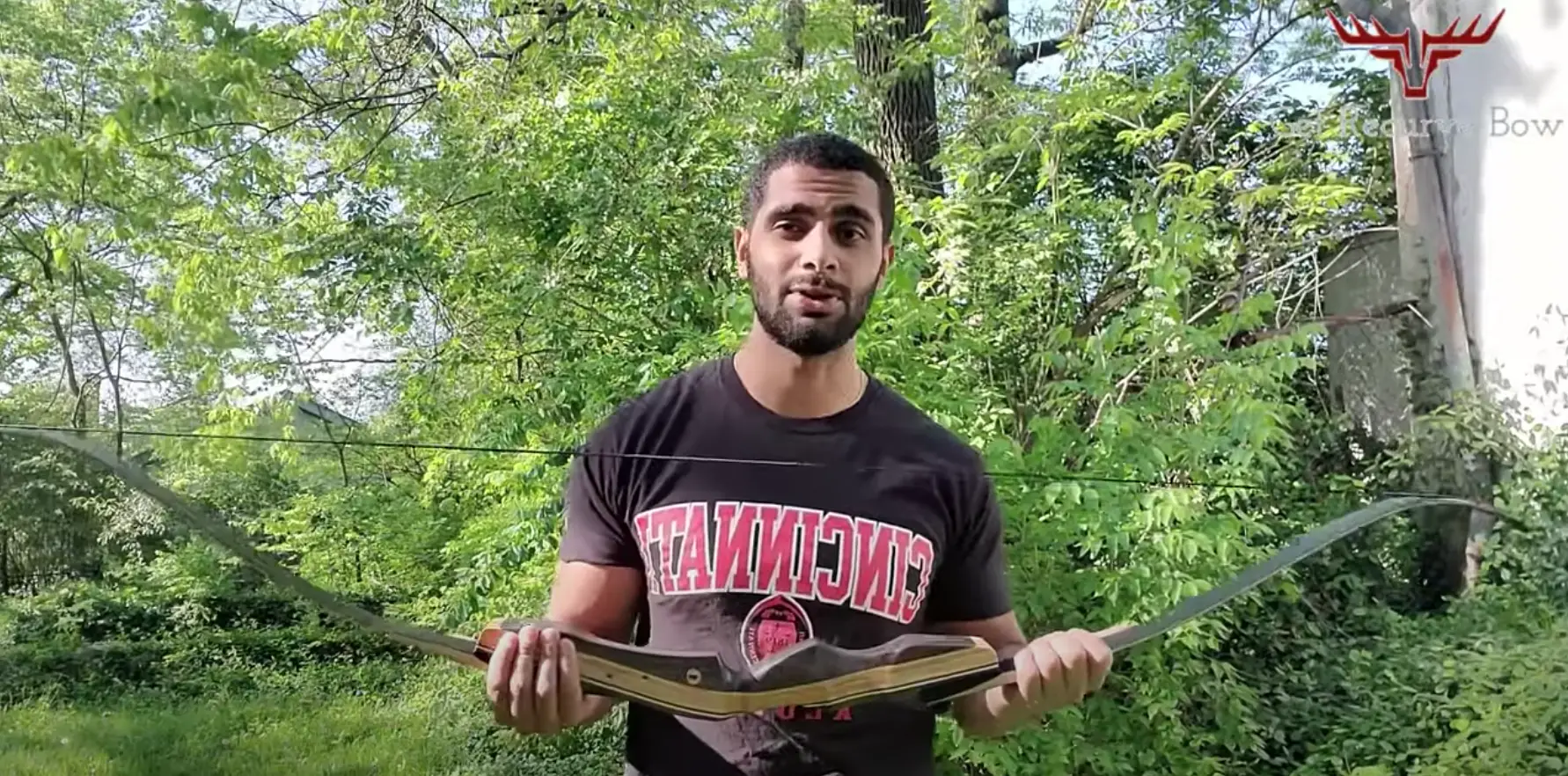
Archery is my hobby & I usually hunt and play on weekends and after work. It’s a passion since I was very young and I love writing about it as well to continuously learn more and share the love of archery with others!

